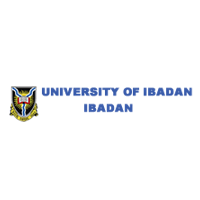Below is a summary of the abstract you submitted. Presenting author(s) is shown in bold.
If any changes need to be made, you can modify the abstract or change the authors.
You can also download a .docx version of this abstract.
If there are any problems, please email Dan at dar78@pitt.edu and he'll take care of them!
This abstract was last modified on May 8, 2019 at 10:05 a.m..

Actinobacteria is a phylum of high G+C Gram positive bacteria with several members (e.g Mycobacterium tuberculosis; the etiologic agent of TB) of economic importance. The recent upsurge in isolation and characterization of Phages of Actinobacteria (Actinophages) is courtesy the SEA-PHAGES program and has resulted in the isolation of over 15,000 Actinophages distributed into over 120 clusters, with the genomes of over 2,000 already deposited in GenBank. Only three genomes exist till date for Cluster FE and are all from lytic phages. In our effort to annotate Idaho (a member of the cluster), we stumbled unto anecdotal evidence that Cluster FE phages lysogenize. Here we describe our findings. Identification of sequences of putative Cluster FE Actinophage-related prophages was done by BLASTp search of predicted Cluster FE phage proteins against the non-redundant protein database at NCBI. The Portal protein (PP), Major Capsid and Protease fusion Protein (MCPFP) and Tape Measure Protein (TMP) sequences of Cluster FE Actinophages were used as queries in the searches with default parameters. Recovered genomes were further screened (using Artemis) for low GC islands that correlated with coordinates from the BLASTp search. Confirmed low GC islands with Phage coding regions were then extracted. Subsequently, prophages were independently auto-annotated using both DNAMASTER and the RAST server and annotations were visually screened using both DNAMASTER and Artemis. Genome Maps were subsequently generated using DNAMASTER. Amino acid similarity of the PP, MCPFP and TMP proteins was done using MEGA5. The structure of TMP in all the ProPhages was predicted using ITASSER. Significant hits spanning entire genomes were recovered from five Actinobacteria genomes belonging to genus Cellulosimicrobium (2 prophages), Arthrobacter (3 prophages) and Microbacterium (1 prophage). Genome Size ranged from 12.5kbp-16.5kbp. GC content ranged from 56.2%-70.5%. Genome organization was very similar with structural genes in synteny and same with non-structural genes. Number of genes per genomes varied from16-23. Across genes and genomes, overall nucleic acid sequence similarity was extremely low. Amino acid similarity was also very low but higher than nucleic acid similarity. Despite significant amino acid diversity, the TMP structure was absolutely conserved across all the genomes. We describe six FE Cluster prophages in Actinobacteria genomes as evidence that these Phages infect a range of Actinobacteria and have a lysogenic phase in their life cycle. We further show that though the genome organization and protein structure of Cluster FE phages is relatively conserved, the sequence similarity, genome size and number of genes vary.
